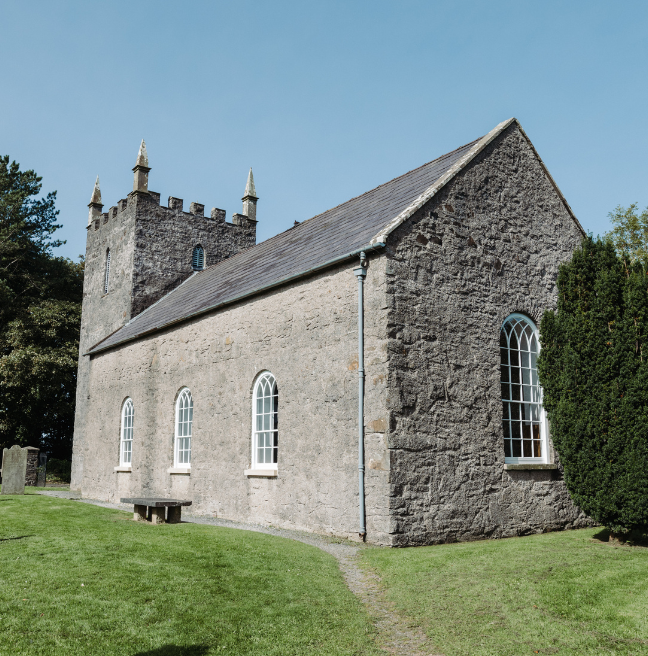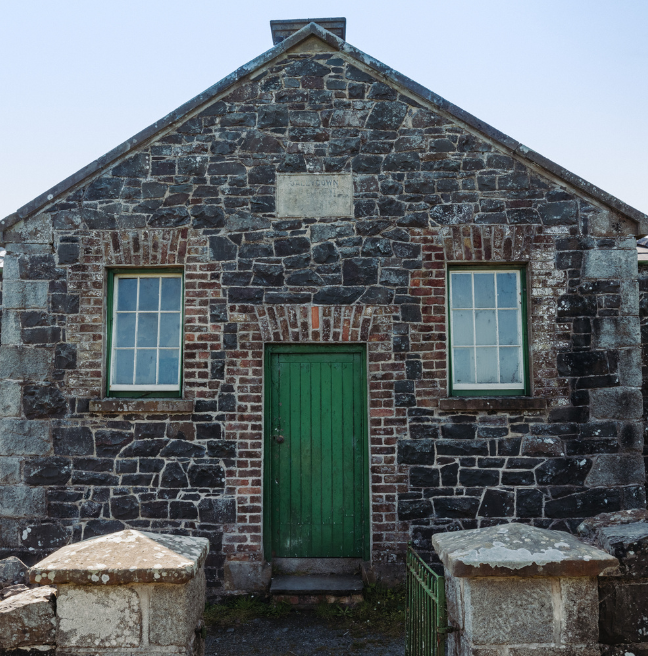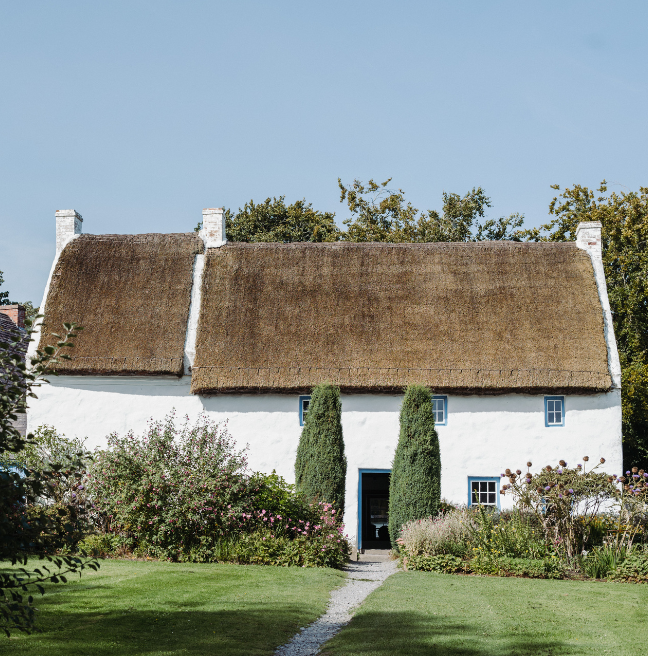
The McCullagh Family
For over a century, the house was home to several generations of the McCullagh family. The Old Rectory is probably one of the most recognisable and picturesque buildings at the Ulster Folk Museum. Originally from the townland of Lismacloskey in the civil parish of Duneane, about one mile east of Toomebridge in County Antrim on the old road to Randalstown, the house opened to museum visitors in 1973.
Date and Name
There is no written record of when the house was built. A construction date of 1717 was established in 1972 as a result of scientific dating techniques carried out by Queen’s University Belfast, who analysed samples of oak timber taken from the roof of the house.
The house was known locally as Gloverstown House. The name Gloverstown suggests that it may have been built for a family named Glover, a common name in the Plantation era. ‘The Old Rectory’ name that has been attributed to the house is an acknowledgement that it was once the home of a Church of Ireland clergyman, Reverend Robert McCullagh (1770-1824) and his family.

Early Inhabitants
The house is thought to have been built on what was originally church land. It is believed to have been part of the Stafford family estate before it was sold to the Alexander family of Portglenone in the first half of the 1800s. Both families were local gentry. The early history of the house is largely unknown, due principally to lack of estate documentation for these families. According to local tradition the large upper room may have been used as some sort of court for a time.
The earliest known inhabitant of the house was Captain Archibald McCallion who is reputed to have fought on the British side during the American War of Independence (1775-1783). Following his return from the war, he came to live at Lismacloskey for a number of years. According to McCullagh family tradition he, or his successor, was evicted from the house because they failed to pay their rent.

Reverend Robert McCullagh
The next known inhabitants of the house were a Church of Ireland family. The head of the family was the Reverend Robert McCullagh. Originally from a farming family who resided in the vicinity of Dungiven, County Londonderry, Robert was a graduate of Trinity College Dublin. He served as tutor-chaplain to the Jones family of Moneyglass (close to Lismacloskey) for a time before securing his position as Curate of the Parish of Duneane.
Robert’s wife was Jane McCullagh (née Edgar). The couple had a large family of twelve children. Robert is purported to have extended the house in the early 1800s by building a new gable to the south. He is also thought to have closed up a number of windows in order to reduce the amount of window tax he had to pay. Robert died following a sudden fatal fit of apoplexy in 1824, on the day his twelfth child Frederick was born.
Robert and Jane’s eldest son Robert died suddenly; another son became an Anglican curate in Birkenhead, where he died unmarried at the age of 33; a third son was an accountant with the Great Northern Railway in Ireland; and a fourth son, David, at a later date was the tenant of a neighbouring farm in Lismacloskey, known locally as McKeever’s.

Only two of Robert and Jane’s twelve children married; a daughter married a man named Stewart; and in 1862 Frederick married Abigail Canmer from Ballydugennan (close to Lismacloskey). It was he who eventually inherited the house and farm of some 50 acres following his mother’s death.

Frederick McCullagh
Frederick was a local farmer and a respected ploughman and though he was not a clergyman like his father, he and his family attended church regularly. Frederick and his wife Abigail reared a family of four daughters and one son in the house – Martha (b.1862), Robert (b.1864), Anna Mary (b.1866), Emily Jane (b.1868) and Margaret (b.1870).

In 1889 two of Frederick and Abigail’s children died as a result of phthisis (pulmonary tuberculosis i.e. TB). Robert died in May, aged 25, and Martha died in July, aged 27. The following year in 1890 Anna Mary married Robert Lougheed Allen, a fellow teacher (he later became a barrister). She was the only child of Frederick and Abigail to marry and have children – much of our information about the house comes from this branch of the family.
At the time of the 1901 census, the house was inhabited by Frederick and Abigail, their daughter Margaret (a clerk in the G.P.O.), Frederick’s sister Anna Jane and the family’s farm servant Frederick McLernon.
Between the 1901 and 1911 census, some significant changes to the family occurred. Frederick died in March 1904 and a few months later in July, the family sold off a great deal of their farm stock, crop and implements at auction. Anna Jane also died in 1906. By the time of the 1911 census, Emily Jane (a National School teacher) had returned home. She is listed in the census along with her sister Margaret, her mother Abigail and the family’s domestic servant Bridget Donnelly.
During the first half of the 20th century the house remained home to members of the McCullagh family. Abigail died in April 1918 and in 1919, Emily Jane and Margaret’s niece Susan Lougheed Calwell died at the house as a result of pulmonary tuberculosis (TB) at the age of 26.
Following the death of Emily Jane, the house and farm were put up for sale by public auction in 1939 and sold for £720. The household effects and furniture were also disposed of at this time. Margaret retired to live with relatives in Lisburn, County Down.
Learn more about the McCullagh family through an oral history interview with Hugh McCluskey and John Andrews.
The Road to Cultra
The house was sold to a neighbouring farmer and local potato merchant, Mr. Alex Bell. The Bell family did not live in the old house but for a several years rented it out to a local family called Murphy. When the house became vacant it was used as an agricultural store and poultry house by the Bell family.
The house came to the attention of the Ulster Folk Museum in 1962 during field study of County Antrim housing. A preliminary survey of the house was carried out at this time. The museum eventually acquired the house from Mr. Bell in 1970 and it was relocated to the museum in 1971.

We hope you have enjoyed reading about Gloverstown House and the McCullagh family. All information contained within this story is believed to be correct at time of publishing. If you have any information to share about the house please contact Victoria Millar.


